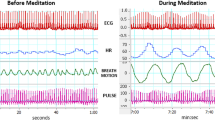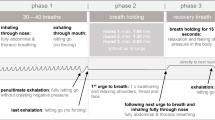Abstract
Even with mild neurological signs, patients with botulism frequently complain of autonomic symptoms. This study aimed at the evaluation of sudomotor and cardiovascular reflex functions by quantitative autonomic testing (QAT), which may identify patients with autonomic involvement but otherwise benign clinical presentation. Five patients with food-borne botulism were subjected to a structured questionnaire on autonomic symptoms, cardiac and neurological examination, and QAT after a median of 2 weeks (baseline) and 12 weeks (follow-up) post intoxication. For calculation of haemodynamic and cardiovascular autonomic parameters, we used the Task Force® Monitor (Version 2.1, CNSystems, Graz, Austria). Cardiovagal function was assessed by Ewing’s test battery. Autonomic complaints were more pronounced than neurological symptoms. Baseline tests revealed widely abnormal sudomotor function and marked impairment of heart rate variation and blood pressure response to standing. Prominent features of cardiovascular failure were high resting heart rate, supine hypertension, orthostatic hypotension, and impaired baroreflex function. Three patients reported inability to keep up with their routine amount of physical work. Based on the baseline QAT results, these three patients were instructed to engage in physical activity but avoid physical strain until there was considerable improvement. On follow-up, fatigue was the most frequent residual complaint, sympathetic skin responses were present, and cardiovascular QAT results were significantly improved and did not differ from those of ten control subjects. QAT identified autonomic involvement in botulism patients with otherwise benign neurological presentation. Comprehensive evaluation of autonomic failure may provide useful information for the management of botulism.

Similar content being viewed by others
References
Ashley EA, Kardos A, Jack ES, Habenbacher W, Wheeler M, Kim YM, Froning J, Myers J, Whyte G, Froelicher V, Douglas P (2006) Angiotensin-converting enzyme genotype predicts cardiac and autonomic responses to prolonged exercise. J Am Coll Cardiol 48:523–531
Chen JT, Chen CC, Lin KP, Wang SJ, Wu ZA, Liao KK (1999) Botulism: heart rate variation, sympathetic skin responses, and plasma norepinephrine. Can J Neurol Sci 26:123–126
Cherington M (1988) Clinical spectrum of botulism. Muscle Nerve 21:701–710
Consensus Committee of the American Autonomic Society, the American Academy of Neurology (1996) Consensus statement on the definition of orthostatic hypotension, pure autonomic failure, and multiple system atrophy. Neurology 46:1470
Dutsch M, Hilz MJ, Devinsky O (2006) Impaired baroreflex function in temporal lobe epilepsy. J Neurol 253:1300–1308
Ewing DJ (1993) Noninvasive evaluation of heart rate: the time domain. In: Low PA (ed) Clinical autonomic disorders. Little Brown, Boston, pp 297–314
Gottlieb SL, Kretsinger K, Tarkhashvili N, Chakvetadze N, Chokheli M, Chubinidze M, Michael Hoekstra R, Jhorjholiani E, Mirtskhulava M, Moistsrapishvili M, Sikharulidze M, Zardiashvili T, Imnadze P, Sobel J (2007) Long-term outcomes of 217 botulism cases in the Republic of Georgia. Clin Infect Dis 45:174–180
Gratze G, Fortin J, Holler A, Grasenick K, Pfurtscheller G, Wach P, Schönegger J, Kotanko P, Skrabal F (1998) A software package for non-invasive, real-time beat-to-beat monitoring of total peripheral resistance and for assessment of autonomic function. Comput Biol Med 28:121–142
Ketch T, Biaggioni I, Robertson RM, Robertson D (2002) Four faces of baroreflex failure. Hypertensive crisis, volatile hypertension, orthostatic tachycardia, and malignant vagotonia. Circulation 105:2518–2523
La Rovere MT, Bigger JT Jr, Marcus FI, Mortara A, Schwartz PJ (1998) Baroreflex sensitivity and heart-rate variability in prediction of total cardiac mortality after myocardial infarction: ATRAMI (autonomic tone and reflexes after myocardial infarction) investigators. Lancet 351:478–484
Lecour H, Ramos H, Almeida B, Barbosa R (1988) Food-borne botulism. A review of 13 outbreaks. Arch Intern Med 148:578–580
Merz B, Bigalke H, Stoll G, Naumann M (2003) Botulism type B presenting as pure autonomic dysfunction. Clin Auton Res 13:337–338
Meusburger S, Reichert S, Heibl S, Nagl M, Karner F, Schachinger I, Allerberger F (2006) Outbreak of foodborne botulism linked to barbecue, Austria, 2006. Euro Surveill 11:E0612144
Neal KR, Dunbar EM (1990) Improvement in bulbar weakness with guanoxan in type B botulism. Lancet 335:1286–1287
Nevas M, Lindstrom M, Virtanen A, Hielm S, Kuusi M, Arnon SS, Vuori E, Korkeala H (2005) Infant botulism acquired from household dust presenting as sudden infant death syndrome. J Clin Microbiol 43:511–513
Robbe HW, Mulder LJ, Ruddel H, Langewitz WA, Veldman JB, Mulder G (1987) Assessment of baroreceptor reflex sensitivity by means of spectral analysis. Hypertension 10:538–543
Ryan DW, Cherington M (1971) Human type A botulism. JAMA 216:513–514
Suarez GA, Opfer-Gehrking TL, Offord KP, Atkinson EJ, O’Brien PC, Low PA (1999) The autonomic symptom profile: a new instrument to assess autonomic symptoms. Neurology 52:523–528
Task Force of the European Society of Cardiology, the North American Society of Pacing, Electrophysiology (1996) Heart rate variability. Standards of measurement, physiological interpretation, and clinical use. Eur Heart J 17:354–381
Vita G, Girlanda P, Puglisi RM, Marabello L, Messina C (1987) Cardiovascular-reflex testing and single-fiber electromyography in botulism. A longitudinal study. Arch Neurol 44:202–206
Conflict of interest statement
The authors report no conflicts of interest.
Author information
Authors and Affiliations
Corresponding author
Rights and permissions
About this article
Cite this article
Topakian, R., Heibl, C., Stieglbauer, K. et al. Quantitative autonomic testing in the management of botulism. J Neurol 256, 803–809 (2009). https://doi.org/10.1007/s00415-009-5022-9
Received:
Revised:
Accepted:
Published:
Issue Date:
DOI: https://doi.org/10.1007/s00415-009-5022-9




